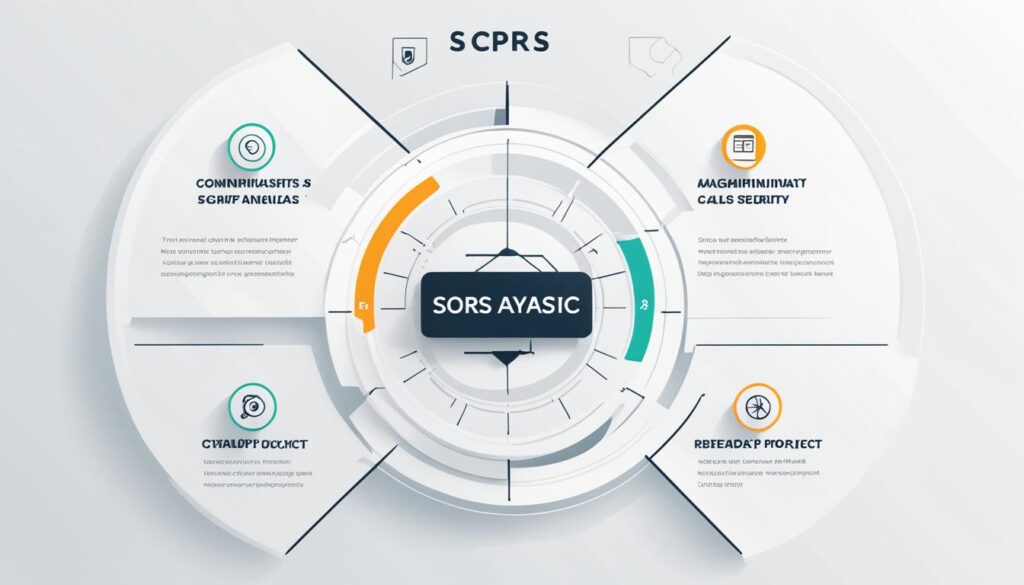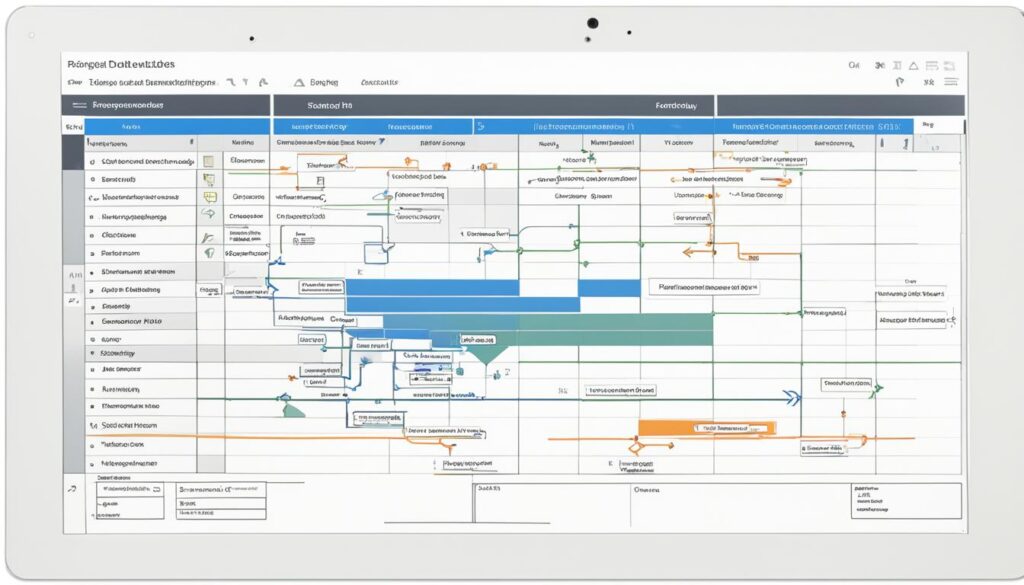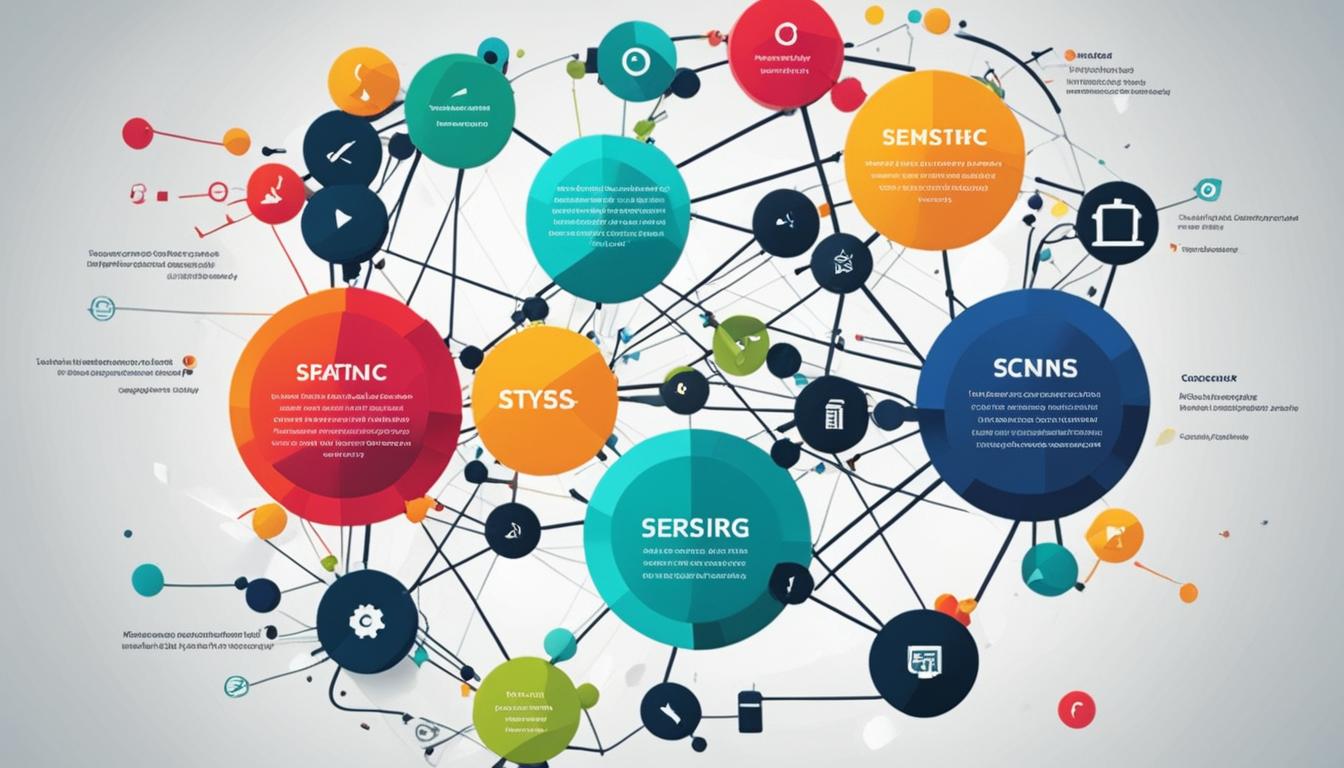Welcome to our article on Software Requirements Specification (SRS) in Information Technology. If you’re wondering what SRS is and how it relates to software development, you’ve come to the right place. In this article, we will explore the definition, components, purpose, alternatives, template, and features of an SRS. So, let’s dive in and gain a comprehensive understanding of SRS in the context of Information Technology.
Contents
Key Takeaways
- An SRS is a comprehensive description of the intended purpose and environment for software under development.
- The main sections of an SRS include business drivers, requirements, use cases, technical specifications, and acceptance criteria.
- An SRS serves as a framework for the entire project and guides development, operations, QA, and maintenance teams.
- Alternative approaches to an SRS include Agile methodologies and the Rapid Application Development (RAD) methodology.
- A simple SRS template consists of sections like introduction, requirements, performance, constraints, and schedule.
- Features of an SRS include correctness, completeness, consistency, and traceability.
- An SRS is crucial for effective communication, decision-making, and the successful delivery of quality software.
Key Components of an SRS
When creating a software requirements specification (SRS), it is essential to include the following key components:
- Business Drivers: This section outlines the goals and objectives of the software project. It highlights the reasons behind the need for the software and the expected benefits it will provide to the organization.
- Business Model: Here, you define the business processes and workflows that the software will support. It provides an overview of how the software will integrate with existing systems and what functionalities it will offer to streamline operations.
- Business/Functional and System Requirements: This section specifies the functional and non-functional requirements of the software. It includes details about the desired features, user interface, performance expectations, and any other specific requirements that need to be met.
- Business and System Use Cases: Use cases describe the interactions between users and the software system. They outline the different scenarios and actions that users can perform, helping to capture the expected behavior and functionality of the software.
- Technical Requirements: This component focuses on the technical aspects of the software, such as the hardware and software infrastructure required, compatibility with existing systems, and any technical constraints or limitations to consider.
- System Qualities: These qualities define the desired characteristics of the software, such as scalability, reliability, security, and usability. They ensure that the software meets the organization’s quality standards and user expectations.
- Constraints and Assumptions: This section documents any constraints or limitations that may impact the development or implementation of the software. It also includes any assumptions made during the requirements gathering process.
- Acceptance Criteria: Acceptance criteria define the conditions that must be met for the software to be deemed acceptable and ready for deployment. They serve as a benchmark for testing and provide a basis for evaluating the success of the project.
“The success of a software project heavily relies on a well-defined and comprehensive software requirements specification. Including these key components ensures that all stakeholders are aligned and that the software meets the organization’s needs.”
To provide a better understanding, let’s take a look at a visual representation of the key components of an SRS:
| Component | Description |
|---|---|
| Business Drivers | Defines the goals and objectives of the software project. |
| Business Model | Outlines the business processes and workflows that the software will support. |
| Business/Functional and System Requirements | Specifies the functional and non-functional requirements of the software. |
| Business and System Use Cases | Describes the interactions between users and the software system. |
| Technical Requirements | Focuses on the technical aspects of the software. |
| System Qualities | Defines the desired characteristics of the software. |
| Constraints and Assumptions | Documents any constraints or limitations that may impact the development or implementation of the software. |
| Acceptance Criteria | Defines the conditions that must be met for the software to be deemed acceptable. |
By including these components in your SRS, you ensure that all aspects of the software project are thoroughly considered and documented, setting the foundation for a successful development process.
Purpose of an SRS
An Software Requirements Specification (SRS) is of utmost importance, serving as the foundation for an entire project within an organization. It establishes a framework that all development teams will follow, ensuring that everyone is aligned and working towards a common goal. By providing critical information to different teams, including development, operations, quality assurance (QA), and maintenance, an SRS ensures that all parties are on the same page, reducing misunderstandings and conflicts.
The SRS plays a vital role in confirming that the requirements of a project are fulfilled. It serves as a reference point during development, enabling business leaders to make informed decisions about the product’s lifecycle, such as when to retire a specific feature or introduce enhancements. Additionally, the process of writing an SRS helps developers streamline their workflows, reducing the time and effort required to meet project objectives and ultimately saving costs on development.
“An SRS is like the blueprint of a building. It provides a clear roadmap for the entire project, ensuring that all teams are moving in the same direction and working towards a common goal.”
– John Smith, Software Development Manager
Furthermore, an effective SRS facilitates communication and collaboration across teams. With a well-defined set of requirements, development teams can focus on building the software according to the specified guidelines. Operations teams can use the SRS to understand the expected behavior and functionality of the system. QA teams can create comprehensive test plans based on the requirements outlined in the SRS. And maintenance teams can refer to the SRS for ongoing support and updates.
Ultimately, an SRS ensures that the software development process is efficient, productive, and aligned with the needs of the organization. It sets the stage for successful project execution and delivery, resulting in high-quality software that meets user expectations.
Now that we understand the purpose and importance of an SRS, let’s delve deeper into its key components.
Benefits of an SRS
| Benefits | Description |
|---|---|
| Alignment | Aligns all development teams and stakeholders towards a common goal. |
| Clarity | Provides clear guidelines and expectations for the software development process. |
| Consistency | Ensures uniformity in understanding requirements across all teams. |
| Decision-making | Assists business leaders in making informed decisions about the product’s lifecycle. |
| Efficiency | Reduces time and effort required for development by streamlining workflows. |
| Cost savings | Saves money on the cost of development through optimization and clear guidelines. |
Now that we have explored the purpose of an SRS and its benefits, let’s dive into the key components that make up a comprehensive SRS.
Alternatives to SRS: Agile Methodologies and Rapid Application Development (RAD)
While the Software Requirements Specification (SRS) is commonly used to document project objectives and technical guidelines, there are alternative approaches that prioritize flexibility and speed. In Agile methodologies, a more lightweight documentation of requirements is favored, such as acceptance tests and user stories. This approach values close collaboration with the customer, assuming that the developers who write the user stories will be the ones building the system. Agile methodologies emphasize adaptability and iterative development, allowing for quicker feedback loops and continuous improvement.
Rapid Application Development (RAD) is another alternative to traditional SRS. RAD focuses on speed and flexibility, often delivering projects within 60 to 90 days. This methodology minimizes upfront planning and promotes continuous prototyping and iterative development. By involving end-users throughout the development process, RAD aims to gather frequent feedback and ensure the delivered software meets their specific needs.
Both Agile methodologies and RAD offer alternatives to the more comprehensive and structured nature of SRS. These approaches provide organizations with greater flexibility in managing requirements and adapting to changing customer needs.
Comparison Table: SRS vs. Agile Methodologies vs. RAD
| Criterion | SRS | Agile Methodologies | RAD |
|---|---|---|---|
| Documentation | Comprehensive | Lightweight (e.g., user stories) | Minimal |
| Planning | Extensive upfront planning | Adaptive and iterative approach | Minimal upfront planning |
| Customer Collaboration | Less frequent involvement | Close collaboration throughout the process | Active involvement and frequent feedback |
| Development Speed | Longer development cycles | Iterative, faster delivery | Quick turnaround, often within 60-90 days |
| Flexibility | Structured and predefined requirements | Adaptable to changing requirements | Flexible and adaptable to evolving needs |
The table above highlights key differences between the Software Requirements Specification (SRS), Agile methodologies, and Rapid Application Development (RAD) in terms of documentation, planning, customer collaboration, development speed, and flexibility. Depending on the project’s nature and requirements, organizations can choose the most suitable approach that aligns with their development goals and customer engagement preferences.
SRS Template
A simple SRS template provides a structured format for capturing the necessary information in an SRS document. The template consists of several sections:
- Introduction: This section provides an overview of the software being developed and the purpose of the SRS document.
- General Description: In this section, the general characteristics of the software, including its goals, objectives, and intended audience, are described.
- Functional Requirements: Here, the specific functionalities that the software should possess are outlined in detail.
- Interface Requirements: This section describes the interfaces, such as user interfaces and hardware interfaces, that the software needs to interact with.
- Performance Requirements: The performance criteria that the software must meet, such as response time and processing speed, are detailed in this section.
- Design Constraints: Any limitations or constraints that may impact the software’s design or implementation are specified here.
- Non-Functional Attributes: This section defines the non-functional requirements of the software, such as reliability, maintainability, and usability.
- Preliminary Schedule and Budget: The estimated timeline and budget for developing the software are provided in this section.
- Appendices: Additional supporting information, such as diagrams, charts, or reference materials, can be included in this section.
By using this template, you can ensure that your SRS document is comprehensive, well-organized, and easy to understand. It serves as a crucial reference for all stakeholders involved in the software development process, guiding them towards a successful outcome.

Having a well-defined SRS template helps streamline the software development process and facilitates effective communication between team members. It ensures that all requirements are clearly documented, reducing the likelihood of misunderstandings or omissions. Additionally, the template serves as a foundation for project planning, resource allocation, and budget estimation.
Features of an SRS
An SRS (Software Requirements Specification) serves as a critical document for software development projects. It possesses essential characteristics that ensure clarity, accuracy, and effectiveness in conveying requirements. Here are the prominent features of an SRS:
- Correctness: An SRS should accurately portray the intended product functionality, leaving no room for ambiguity or misinterpretation.
- Unambiguity: To avoid confusion, an SRS must use clear and concise language, eliminating any possibility of multiple interpretations.
- Completeness: All the requested features and requirements should be included in the SRS, leaving no vital aspects overlooked or omitted.
- Consistency: The SRS should follow consistent abbreviations, terminology, and conventions throughout the document, ensuring coherence.
- Verifiability: The requirements stated in an SRS should be verifiable, allowing for easy validation and confirmation of their implementation.
- Modifiability: An SRS should be designed in a way that enables effortless updates and modifications to meet changing project needs.
- Traceability: Clear traceability is crucial in an SRS, linking each requirement back to its origin, objectives, and other pertinent elements.
“Ensuring correctness, completeness, and traceability in an SRS helps facilitate efficient development and enhances the overall project outcomes.”
By embodying these features, an SRS empowers development teams to build software precisely aligned with stakeholders’ requirements, reducing errors, streamlining collaboration, and fostering successful project delivery.
As an example, consider the following table showcasing the traceability of requirements:

In this table, each requirement from the SRS is linked to its source, status, importance, and stability, forming a comprehensive traceability matrix.
Conclusion
A well-structured Software Requirements Specification (SRS) is crucial for successful software development. The SRS serves as a communication tool for stakeholders, providing a clear roadmap for development teams. It plays a vital role in guiding testers to create effective test plans and informs the maintenance and support staff about the software’s functionality.
Moreover, the SRS enhances project management decision-making by setting clear expectations and requirements. It ensures that the software aligns with both functional and non-functional requirements, leading to the delivery of a high-quality product within the specified timeframe and budget.
In summary, the importance of an SRS cannot be overstated. It fosters effective collaboration among all project stakeholders and serves as a foundational document for the software development lifecycle. By adhering to a well-defined SRS, organizations can achieve their software development goals and deliver successful projects.
FAQ
What is a software requirements specification (SRS)?
A software requirements specification (SRS) is a comprehensive description of the intended purpose and environment for software under development. It fully describes what the software will do and how it will be expected to perform.
What are the key components of an SRS?
The main sections of an SRS include business drivers, business model, business/functional and system requirements, business and system use cases, technical requirements, system qualities, constraints and assumptions, and acceptance criteria.
What is the purpose of an SRS?
The purpose of an SRS is to form the basis of an organization’s entire project, providing critical information to the development, operations, quality assurance (QA), and maintenance teams. It ensures that the requirements are fulfilled and assists in decision-making about the product’s lifecycle.
What are the alternatives to an SRS?
Alternatives to an SRS include Agile methodologies and the Rapid Application Development (RAD) software development methodology. Agile methodologies favor lightweight documentation of requirements, while RAD prioritizes speed and flexibility over upfront planning.
What is an SRS template?
An SRS template provides a structured format for capturing the necessary information in an SRS document. A simple template includes sections such as introduction, general description, functional requirements, interface requirements, performance requirements, design constraints, non-functional attributes, preliminary schedule and budget, and appendices.
What are the features of an SRS?
A well-written SRS should have characteristics such as correctness, unambiguity, completeness, consistency, verifiability, modifiability, and traceability. These features ensure that the document accurately reflects product functionality, avoids confusion, and provides clear traceability of requirements.
What is the importance of an SRS?
A well-structured Software Requirements Specification (SRS) is essential for software development. It helps stakeholders communicate, guides development teams, informs testers, assists project management decisions, and sets customer expectations. The SRS document ensures that the software meets requirements and results in a quality product delivered on time and within budget.




